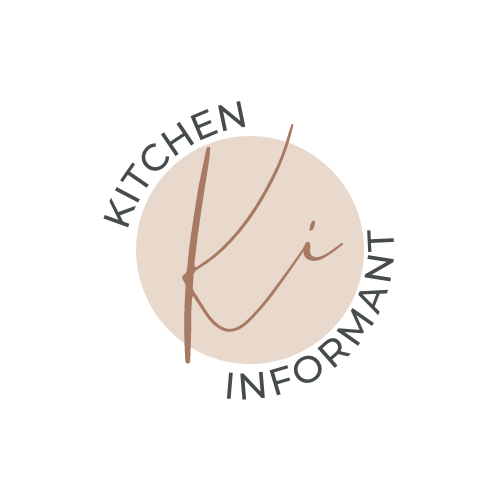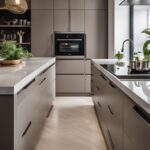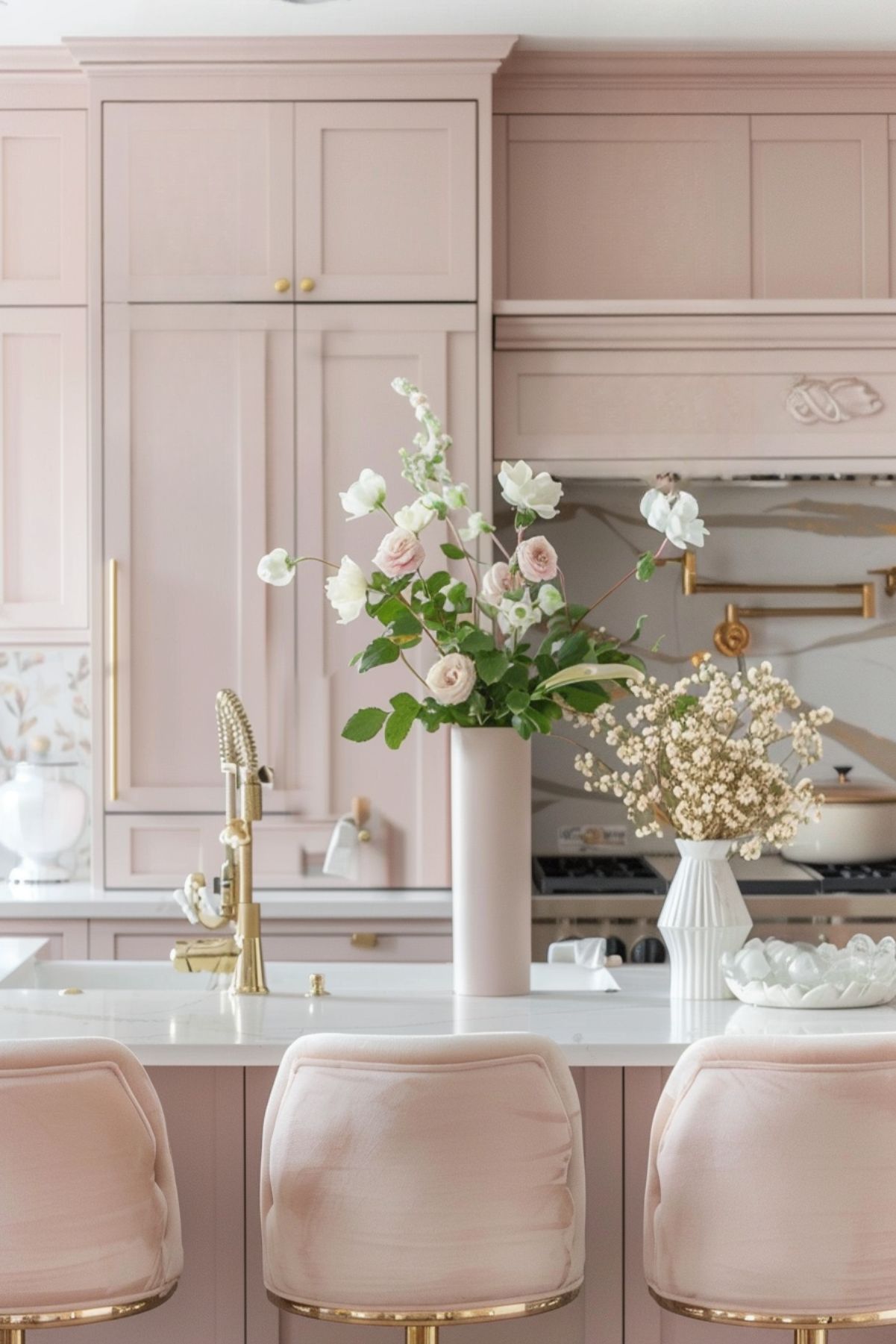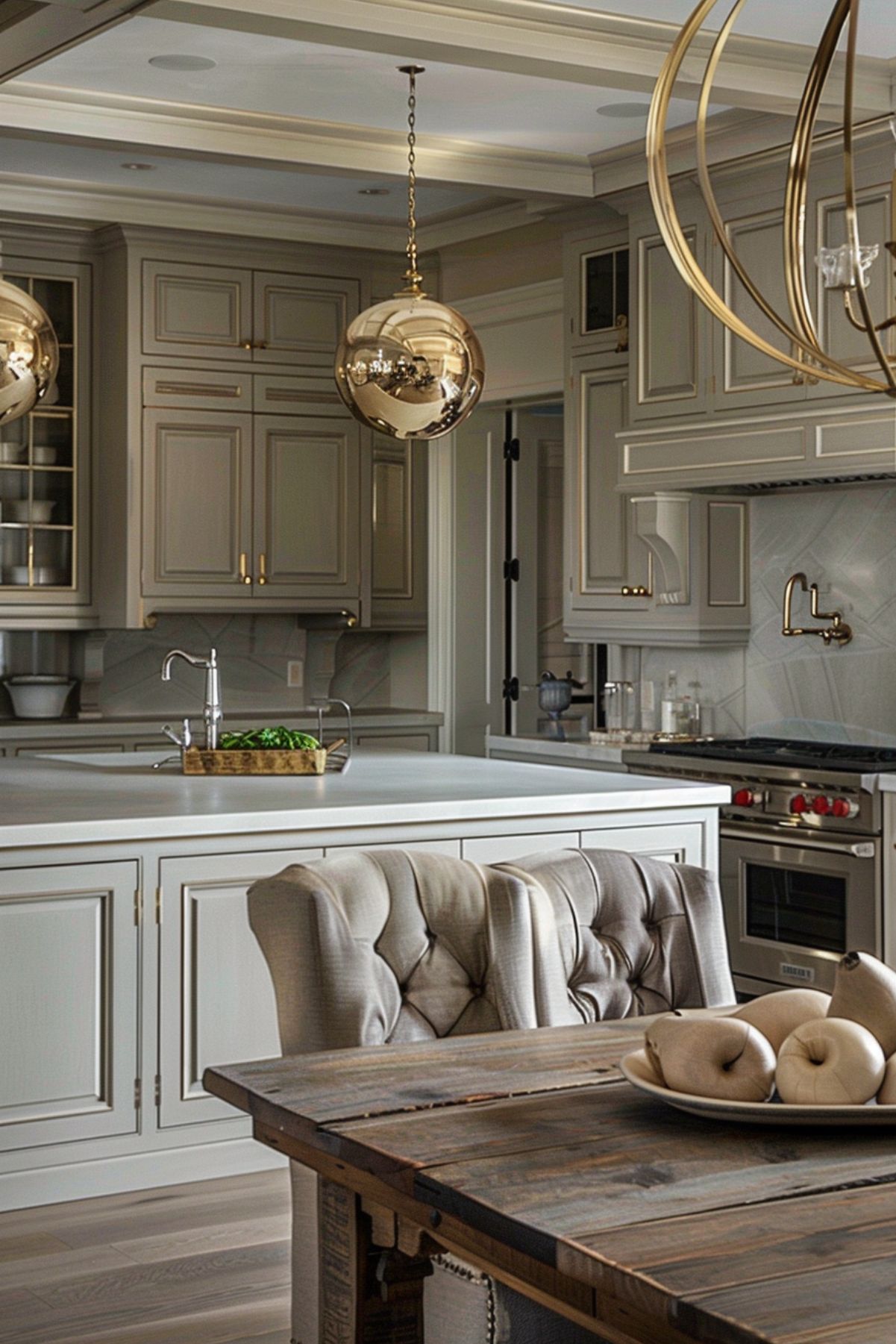Coral Kitchen Ideas: Transforming Spaces with a Pop of Color
Coral is a bright and cheerful color that can add a pop of life to any kitchen. It is a versatile color that can be paired with a variety of materials and color palettes to create a unique and inviting space.
Coral kitchens are becoming increasingly popular as more homeowners seek to add a touch of warmth and personality to their homes.

Understanding Coral in Interior Design is essential to creating a cohesive and visually appealing space. Coral is a warm color that can evoke feelings of happiness, energy, and excitement.
It is a popular color choice for kitchens because it can stimulate the appetite and create a welcoming atmosphere. Design Principles for Coral Kitchens should be carefully considered to ensure that the space is both functional and beautiful.
Choosing the Right Materials is also crucial when designing a coral kitchen. Different materials can create different effects when paired with coral. For example, wood cabinets and finishes can complement coral tones and make the color pop.
Coral Color Palettes can also be used to create a cohesive and visually appealing space. Different shades of coral can be paired with complementary colors to create a unique and inviting space.
Lighting and Coral Hues can also be used to enhance the beauty of a coral kitchen. Decor and Accessories can be used to add personality and style to the space.
Key Takeaways
- Coral is a versatile and popular color choice for kitchens.
- Understanding Coral in Interior Design is essential to creating a cohesive and visually appealing space.
- Choosing the Right Materials, Coral Color Palettes, Lighting and Coral Hues, and Decor and Accessories are important considerations when designing a coral kitchen.
Understanding Coral in Interior Design
Coral is a warm, vibrant color that can add a pop of energy to any space. It’s a versatile color that can be used in various interior design styles, from modern to traditional.
Coral is a mixture of pink, orange, and red, and it can range from soft and subtle to bold and bright.
When using coral in interior design, it’s essential to consider the other colors in the room. Coral pairs well with neutral colors like white, beige, and gray.
It can also be paired with other warm colors like yellow, orange, and red.
It’s essential to balance the warm colors with cool colors like blue and green to avoid overwhelming the space.
Coral can be used as an accent color or as the main color in a room. It’s an excellent color for accent walls, throw pillows, curtains, and other decorative elements.
If using coral as the main color in a room, it’s essential to balance it with neutral colors and other warm and cool colors.
When it comes to furniture and fixtures, coral can be used in various ways. A coral-colored sofa or armchair can add a bold statement to a living room.
Coral-colored cabinets can add a pop of color to a kitchen or bathroom. Coral-colored tiles can add a playful touch to a backsplash or shower.
Design Principles for Coral Kitchens

Coral is a vibrant and cheerful color that can transform any kitchen into a lively and inviting space.
When designing a coral kitchen, it is important to consider a few design principles to ensure that the space is balanced and harmonious.
Color Theory and Coral
Color theory is the study of how colors interact with each other and how they can be combined to create pleasing color schemes.
Coral is a warm color that is often associated with energy, enthusiasm, and creativity. It can be paired with other warm colors such as yellow, orange, and red to create a vibrant and energetic space.
Alternatively, it can be paired with cool colors such as blue, green, and purple to create a more balanced and relaxing space.
Balancing Colors
When designing a coral kitchen, it is important to balance the color with other elements in the space. Too much coral can be overwhelming and may make the space feel cramped or claustrophobic.
To balance the color, consider adding neutral elements such as white or gray cabinets, countertops, or backsplashes.
This will help to create a more open and airy space while still allowing the coral to be the focal point.
Coral as an Accent or Focal Point
Coral can be used as either an accent or a focal point in a kitchen design. As an accent, it can be used sparingly to add pops of color throughout the space.
For example, coral kitchen accessories such as dish towels, utensils, or small appliances can be used to add a touch of color without overwhelming the space.
As a focal point, coral can be used on larger elements such as cabinets, countertops, or backsplashes.
This will create a bold and vibrant space that is sure to make a statement.
In summary, when designing a coral kitchen, it is important to consider color theory, balance the color with other elements in the space, and decide whether to use coral as an accent or a focal point.
By following these principles, you can create a beautiful and inviting space that is sure to impress.
Choosing the Right Materials
When designing a coral kitchen, choosing the right materials is key to creating a cohesive and beautiful space.
From countertops to cabinetry, every element should complement each other to bring out the best of the coral color.
Here are some materials to consider when designing a coral kitchen.
Countertops and Backsplashes
Countertops and backsplashes are two of the most important elements in a kitchen. They not only provide a functional surface but also contribute to the overall look and feel of the space.
When it comes to coral kitchens, there are several options to consider.
One popular choice is quartz countertops, which come in a range of coral shades and patterns. Quartz is a durable and low-maintenance material that can withstand daily wear and tear.
For a more natural look, consider installing a coral-hued granite countertop. It is a natural stone that is both heat and scratch-resistant.
For backsplashes, ceramic tiles in coral shades are a great option. They are easy to clean and come in a variety of shapes and sizes, making it easy to create a unique pattern.
Cabinetry and Hardware
Cabinetry and hardware are another important aspect of a coral kitchen.
When choosing cabinetry, consider using a light-colored wood like oak or maple to complement the coral color.
These woods have a warm tone that pairs well with coral.
For hardware, consider using brass or gold finishes. They add a touch of elegance to the space and complement the warm tones of the coral color.
Alternatively, brushed nickel or stainless steel hardware can provide a modern and sleek look.
Flooring Options
Flooring is an often-overlooked aspect of kitchen design, but it can make a big impact on the overall look of the space. When it comes to coral kitchens, there are several flooring options to consider.
One popular choice is hardwood flooring in a light shade. It provides a warm and inviting look that complements the coral color.
For a more durable and low-maintenance option, consider porcelain tiles in coral shades. They are easy to clean and can withstand heavy foot traffic.
Choosing the right materials is crucial when designing a coral kitchen. From countertops to cabinetry, every element should complement each other to create a cohesive and beautiful space.
Coral Color Palettes

Coral is a vibrant, warm color that can add a pop of energy to any space. When it comes to designing a coral kitchen, choosing the right color palette is key.
Here are three popular coral color schemes to consider:
Complementary Color Schemes
Complementary color schemes use colors that are directly opposite each other on the color wheel. For coral, the complementary color is teal or blue-green.
When paired together, coral and teal create a bold, eye-catching look. To balance out the intensity of these colors, consider using neutral accents like white or beige.
Analogous Color Schemes
Analogous color schemes use colors that are adjacent to each other on the color wheel. For coral, this means using colors like pink, orange, and peach.
These colors create a harmonious, cohesive look that is perfect for a coral kitchen. To add depth to this color scheme, consider using different shades and tones of these colors.
Monochromatic Color Schemes
Monochromatic color schemes use different shades and tones of a single color. For a coral kitchen, this means using different shades of coral, from light peach to deep salmon.
This creates a sophisticated, cohesive look that is perfect for a modern kitchen.
To add contrast to this color scheme, consider using black or white accents.
When choosing a color palette for a coral kitchen, it’s important to consider the overall mood and style you want to create.
Whether you choose a bold, complementary color scheme or a subtle, monochromatic one, a coral kitchen is sure to add warmth and energy to your home.
Lighting and Coral Hues

When it comes to transforming a kitchen with a pop of coral, lighting is an essential factor that should not be overlooked.
The right lighting can accentuate the coral hues and create a warm and inviting atmosphere in the kitchen.
Natural Light Considerations
Natural light is an excellent way to showcase the coral hues in your kitchen. If you have large windows or skylights in your kitchen, you can take advantage of the natural light to create a bright and airy space.
When designing your kitchen, consider the orientation of the windows and the time of day when the sunlight enters the room.
The angle of the sun can affect the way the coral hues appear in your kitchen.
Artificial Lighting Choices
In addition to natural light, artificial lighting can also help bring out the beauty of coral in your kitchen. When selecting artificial lighting, consider the color temperature and the intensity of the light.
Warm white or soft white bulbs can create a cozy and inviting atmosphere, while cool white bulbs can make the coral hues appear brighter and more vivid.
Another option is to install under-cabinet lighting, which can highlight the coral backsplash or countertops and create a warm and welcoming ambiance in the kitchen.
Pendant lights can also be a great addition to a coral-themed kitchen. They can provide task lighting and add a decorative touch to the space.
The right lighting can make a significant difference in the way the coral hues appear in your kitchen.
By considering natural light and artificial lighting options, you can create a beautiful and inviting space that showcases the beauty of coral.
Decor and Accessories

Coral is a versatile color that can be incorporated into any kitchen decor style. Adding coral decor and accessories is an easy way to transform a kitchen space with a pop of color.
Here are some ideas for incorporating coral into your kitchen decor.
Textiles and Upholstery
Coral textiles and upholstery can add a touch of warmth and vibrancy to a kitchen.
Consider adding coral-colored curtains, dish towels, or even a rug to your kitchen decor. A coral-colored tablecloth or placemats can also add a pop of color to your dining area.
For a bolder statement, consider upholstering your dining chairs or barstools in a coral fabric.
Wall Art and Decorations
Wall art and decorations are an easy way to incorporate coral into your kitchen decor. Hang a coral-colored painting or print on the wall to add a pop of color to the space.
Alternatively, consider adding coral-colored shelves or decorative objects to your kitchen. A coral-colored vase or candle holder can be a subtle way to incorporate the color into your decor.
Tableware and Appliances
Coral tableware and appliances can add a unique touch to a kitchen. Consider adding coral-colored dinnerware, glassware, or even a kettle or toaster to your kitchen.
For a more subtle touch, consider adding coral-colored handles to your cabinets or drawers.
Adding coral decor and accessories is an easy way to transform a kitchen space with a pop of color.
Whether you choose to incorporate coral through textiles, wall art, or tableware, the color is sure to add warmth and vibrancy to your kitchen decor.
Frequently Asked Questions
What are complementary colors for a coral-themed kitchen?
When it comes to complementary colors for a coral-themed kitchen, there are several options to choose from. One popular choice is to pair coral with soft pastels like blush pink and mint green. This combination creates a calming and serene atmosphere in the kitchen. Another option is to pair coral with bold accent shades like navy blue and golden yellow. This creates a more vibrant and energetic atmosphere in the kitchen. Neutral colors like beige, gray, and white also work well with coral and can help to balance out the bright and bold color.
How can I incorporate coral accents into my kitchen design?
Incorporating coral accents into your kitchen design is a great way to add a pop of color and create a cheerful atmosphere. There are many ways to do this, depending on your personal style and preferences. One easy way to incorporate coral accents is by adding small accessories like vases, lampshades, or kitchen towels. Another option is to add coral-colored dinnerware, curtains, or even a rug to your kitchen decor. For a more dramatic look, consider adding coral-colored appliances or a coral tile backsplash behind your oven.






